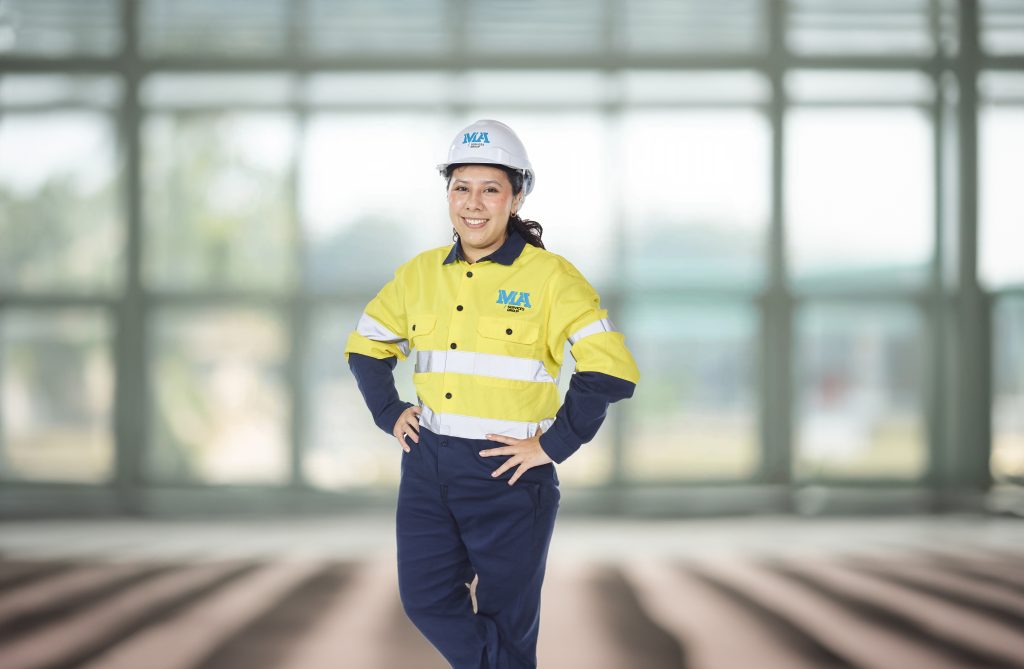In today’s business landscape, sustainability is no longer just a buzzword; it’s an essential component of a company’s long-term success. One area where businesses can significantly reduce their environmental footprint is through sustainable asset maintenance. By adopting eco-friendly practices, companies not only reduce waste and energy consumption but also align with broader sustainability goals that appeal to customers, investors, and stakeholders.
In this blog, we’ll explore how businesses can minimise their environmental impact through sustainable asset maintenance practices.
The Importance of Sustainable Asset Maintenance
Asset maintenance plays a critical role in the operational efficiency of any business. However, traditional maintenance methods can often result in excessive resource consumption, hazardous waste, and a larger carbon footprint. By transitioning to sustainable practices, businesses can:
- Lower energy consumption
- Minimise waste generation
- Reduce their carbon footprint
- Improve the lifespan of their assets
This shift not only helps the environment but also positions the company as a forward-thinking, eco-conscious organisation. Let’s dive into the strategies that can help achieve this.
Energy-Efficient Maintenance Practices
One of the most effective ways to minimize the environmental impact of asset maintenance is to prioritise energy efficiency. Whether it’s through regular maintenance of HVAC systems, lighting, or heavy machinery, energy-efficient practices ensure that equipment is operating at peak performance without wasting energy.
Key Strategies for Energy-Efficient Maintenance:
- Routine Equipment Inspections: Regular inspections help identify inefficiencies in systems like HVAC, motors, and lighting. Fixing leaks, calibrating systems, and cleaning filters can reduce energy consumption significantly.
- Energy Audits: Conduct energy audits to assess areas where energy is being wasted and implement corrective actions to optimise performance.
- Upgrading to Energy-Efficient Equipment: Investing in energy-efficient appliances, machinery, and systems helps lower energy usage and reduces the need for frequent repairs.
By focusing on energy-efficient maintenance, businesses not only cut costs but also contribute to the reduction of greenhouse gas emissions.
Reducing Waste Through Preventive Maintenance
Preventive maintenance is another essential strategy for promoting sustainability. By regularly servicing and maintaining equipment, businesses can prevent breakdowns, extend the lifespan of their assets, and reduce the need for frequent replacements. This approach reduces the amount of waste generated from discarded materials and equipment.
Benefits of Preventive Maintenance:
- Minimised Waste: Regular maintenance helps reduce the need for large-scale repairs and replacements, thereby decreasing the waste produced from worn-out parts or entire systems.
- Extended Equipment Lifespan: Well-maintained assets tend to last longer, reducing the need for new purchases and the environmental cost of manufacturing and transporting new equipment.
- Optimised Resource Use: Preventive maintenance allows for better planning and resource allocation, ensuring that materials and tools are used efficiently, with minimal wastage.
Eco-Friendly Lubricants and Cleaning Products
Using eco-friendly lubricants, oils, and cleaning products is another effective way to incorporate sustainability into asset maintenance. Traditional chemicals and lubricants can be harmful to the environment, contributing to water pollution and soil contamination. However, eco-friendly alternatives are biodegradable and non-toxic, minimising environmental impact.
Sustainable Product Options:
- Biodegradable Lubricants: These are designed to break down naturally, reducing pollution and harm to local ecosystems.
- Non-Toxic Cleaning Agents: Eco-friendly cleaning products contain fewer harmful chemicals and pollutants, making them safer for both employees and the environment.
- Recycled Materials: Using recycled materials in maintenance operations, such as filters or packaging, further reduces the carbon footprint of the process.
By incorporating green products into your maintenance routine, your company can demonstrate a commitment to sustainability while ensuring the safety of your staff and the environment.
Leveraging Predictive Maintenance Technology
Predictive maintenance, powered by data analytics and IoT-enabled sensors, plays a key role in sustainable asset maintenance. By continuously monitoring the condition of assets in real-time, businesses can predict when equipment is likely to fail and intervene before significant damage occurs.
How Predictive Maintenance Supports Sustainability:
- Reduced Resource Use: Instead of waiting for equipment to break down and require extensive repairs, predictive maintenance allows for smaller, less resource-intensive fixes.
- Lower Energy Consumption: Predictive maintenance ensures that systems operate at maximum efficiency, reducing energy usage and emissions.
- Minimised Waste: Early detection of potential issues helps prevent catastrophic failures that could lead to large amounts of waste from damaged parts or systems.
Implementing predictive maintenance reduces the likelihood of overusing materials, saves energy, and ensures that resources are used only when necessary.
Recycling and Repurposing Materials
Another aspect of sustainable asset maintenance is implementing recycling and repurposing initiatives. Businesses should aim to recycle or repurpose old equipment, parts, and materials whenever possible. Whether through refurbishing old machines or responsibly disposing of parts through certified recycling programs, companies can significantly reduce their environmental footprint.
Sustainable Recycling Practices:
- Refurbishment Programs: Refurbishing and reusing parts extends the life of equipment and reduces the need for new materials.
- Certified Recycling: Partnering with certified recycling programs ensures that old or unusable materials are disposed of responsibly, rather than contributing to landfill waste.
- Repurposing for Other Uses: Some equipment or parts can be repurposed for secondary functions within the business, reducing the need to purchase new products.
These practices not only cut down on waste but also create a circular economy within the business, where materials are used efficiently and to their fullest potential.
Conclusion
Sustainable asset maintenance is about more than just maintaining equipment—it’s about adopting practices that minimise environmental impact and contribute to long-term business sustainability goals. By focusing on energy efficiency, preventive maintenance, eco-friendly products, predictive maintenance, and recycling, businesses can reduce their environmental footprint, cut operational costs, and enhance their corporate responsibility efforts.
At MA Services Group we are committed to offering eco-friendly maintenance solutions that align with your sustainability goals. Let us help you optimise your asset care while contributing to a greener, more sustainable future.
Contact us today to learn more about our sustainable asset maintenance services!


